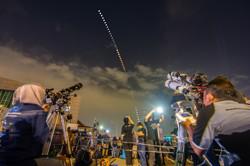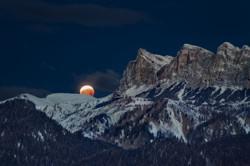Glossary term: Eclipse de lune
Description: Une éclipse lunaire se produit lorsque la Lune passe dans l'ombre de la Terre. Cela ne peut se produire que lorsque l'alignement du Soleil, de la Terre et de la Lune est quasi-parfait, la Terre se trouvant directement entre le Soleil et la Lune. Ainsi, une éclipse lunaire ne peut se produire qu'une nuit de pleine lune. Une éclipse lunaire totale se produit lorsque la Lune se trouve entièrement dans l'ombre de la Terre. Une éclipse lunaire partielle se produit lorsque la Lune n'est que partiellement couverte par l'ombre de la Terre. Le type et la durée d'une éclipse de Lune dépendent de la position précise de la Lune sur son orbite autour de la Terre au moment de l'éclipse.
Related Terms:
See this term in other languages
Term and definition status: The original definition of this term in English have been approved by a research astronomer and a teacher The translation of this term and its definition is still awaiting approval
The OAE Multilingual Glossary is a project of the IAU Office of Astronomy for Education (OAE) in collaboration with the IAU Office of Astronomy Outreach (OAO). The terms and definitions were chosen, written and reviewed by a collective effort from the OAE, the OAE Centers and Nodes, the OAE National Astronomy Education Coordinators (NAECs) and other volunteers. You can find a full list of credits here. All glossary terms and their definitions are released under a Creative Commons CC BY-4.0 license and should be credited to "IAU OAE".
If you notice a factual or translation error in this glossary term or definition then please get in touch.
Related Media
L'éclipse entre nous, par Muhammad Rayhan, Indonésie
Credit: Muhammad Rayhan/IAU OAE
License: CC-BY-4.0 Creative Commons Attribution 4.0 International (CC BY 4.0) icons
The eclipsed Moon sets near the Rochetta di Prendera, Dolomiti Unesco, by Alessandra Masi, Italy
Credit: Alessandra Masi/IAU OAE
License: CC-BY-4.0 Creative Commons Attribution 4.0 International (CC BY 4.0) icons










